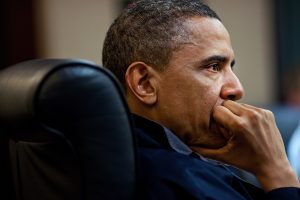[ad_1]
Traders within the inventory market usually discuss bubbles. Like bubbles, the inventory market can rise over time. Nevertheless, when the bubble pops, every little thing comes crashing down.
Securities markets are sometimes cyclical, following a sample of booms and busts. Nevertheless, bubbles may end up in excessive rises and drops in asset values. For those who’re unfortunate or have poor timing, you would lose some huge cash. That makes it necessary to know what a inventory market bubble is, how they work, and how you can make investments throughout a bubble.
What Is a Inventory Market Bubble?
A inventory market bubble happens when contributors within the inventory market trigger costs for shares to rise above their truthful worth. This usually occurs as a result of investor confidence is greater than it ought to be.
Calculating a good worth for a inventory is troublesome, however there are various formulation traders use. For instance, the price-to-earnings (P/E) ratio of the S&P 500 has averaged about 15 over the lifetime of the index. If the P/E ratio for the index had been to spike to 25 or 30, one might argue that it’s being attributable to a inventory market bubble.

You personal shares of Apple, Amazon, Tesla. Why not Banksy or Andy Warhol? Their works’ worth doesn’t rise and fall with the inventory market. They usually’re loads cooler than Jeff Bezos.
Get Precedence Entry
Throughout a bubble, inventory costs are inflated past what they need to be. Ultimately, they’ll return to a extra affordable value. Many confer with this because the bubble popping as costs drop quickly. When the bubble pops, a inventory’s value could fall to and even beneath its truthful worth as traders panic and attempt to restrict their losses.
5 Levels of a Inventory Market Bubble
There are usually 5 phases concerned in a inventory market bubble.
1. Displacement
Displacement happens when some main change causes traders to get excited and extra concerned out there.
For instance, a model new expertise, resembling cryptocurrencies, may trigger traders to pour cash into that trade. Traditionally low rates of interest might additionally encourage traders to over-borrow or commerce on margin to pour cash into the market.
2. Growth
As traders get extra excited by the displacement occasion and proceed to put money into the monetary markets, costs start to rise. Demand for securities rises slowly at first, inflicting costs to exceed their elementary worth.
Over time, momentum causes demand and costs to rise much more shortly. As shares attain greater costs, extra traders purchase in, fearing they’ll miss out on straightforward earnings.
3. Euphoria
On the peak of the bubble, a way of euphoria with the market or the economic system causes traders to behave with irrational exuberance. Asset costs attain extremely excessive ranges in comparison with their elementary values.
Traders will generally tout varied metrics to justify the worth will increase the market has seen and proceed to purchase, hoping to seize better earnings.
4. Revenue-Taking
Because the bubble reaches its peak, some traders will notice that they’re taking part in a speculative bubble. They could start to see warning indicators that the bubble is about to burst and start taking steps to lock of their earnings.
It may be extremely troublesome to know when a bubble is about to burst, however when folks start taking earnings, a downturn is probably going not far-off.
5. Panic
Identical to a bubble can pop with only a small poke, a inventory market bubble can pop based mostly on a really small occasion.
Regardless of the trigger, as soon as the bubble bursts, traders start to panic and promote their property. As a result of there are much more sellers than patrons, this mass sell-off causes a inventory market crash as the worth of shares drops precipitously.
Relying on the reason for the inventory bubble and the severity with which it pops, it could actually even result in a worldwide monetary disaster.
Historic Inventory Market Bubbles
Market bubbles have an extended and storied historical past. They’re attributable to inherent biases and behaviors of humanity, so you possibly can see similarities within the bubbles which have occurred throughout historical past.
Dutch Tulip Mania
One of many first market bubbles occurred within the Netherlands in the course of the early 1600s. Though it didn’t result in an financial disaster within the nation, it has been a helpful case research for future economists.
Tulips, together with many different vegetation, had been first launched to Europe within the 1500s. They had been prized for his or her intense colours and gained recognition as a standing image amongst elites, inflicting their costs to rise.
Hoping to revenue from the recognition of the flower, many types had been cultivated, every selection receiving an extravagant identify.
Tulips take years to develop, which led to the creation of futures contracts: funds now for a promise of tulips at a set date sooner or later.
Tulips continued to achieve recognition, inflicting costs to rise and merchants from different nations started to enter the market. The futures marketplace for tulips grew to the purpose that it was formalized and tulips grew to become the fourth-largest export of the Netherlands.
The formalization of the futures marketplace for tulips made it straightforward for anybody to start buying and selling out there, inflicting hypothesis and large value rises. By 1637, contracts would change arms 5 instances earlier than any tulips may very well be delivered.
The market crashed in 1637 attributable to varied causes, together with an outbreak of the bubonic plague.
1929 Wall Avenue Crash
The 1929 Wall Avenue crash was essentially the most impactful inventory market crash in United States historical past. It was preceded by the Roaring ‘20s, an period of optimism and extra and an inflow of speculators into the inventory market.
In March 1929, the Federal Reserve issued a warning about extra hypothesis out there, inflicting a small drop in costs. Manufacturing of products slowed and shopper debt rose attributable to straightforward borrowing.
Costs started to rise once more within the short-term, reaching a peak in September 1929. That month in London, British investor Clarence Hatry and plenty of associates had been imprisoned for fraud, which brought on the U.S. market to start to wobble.
On October 24, 1929, often known as Black Thursday, the U.S. market misplaced 11% of its worth at opening however regained some worth because of the efforts of main bankers. The following Monday the crash worsened with a greater than 12% drop. The day that adopted, Black Tuesday, noticed additional panic and one other 11% drop in inventory values.
The inventory market didn’t return to earlier ranges till 1954.
Japan’s Actual Property Bubble
Japan noticed an actual property and inventory market bubble between 1986 and 1991. Throughout this era, the Financial institution of Japan inspired will increase within the cash provide and easy accessibility to credit score. It confirmed an unwillingness to tighten its insurance policies attributable to a latest recession attributable to an increase within the yen’s worth.
Actual property costs in main cities resembling Tokyo rose as a lot as 300% between 1986 and 1991. These value will increase stemmed from huge demand and closely restricted provide, in addition to easy accessibility to debt to finance actual property purchases.
Inventory costs additionally noticed vital will increase. Many firms started shopping for shares of their associate companies, which lowered the variety of shares buying and selling available on the market. This made value manipulation simpler and brought on costs to maneuver even greater. By 1989, the Tokyo Inventory Alternate’s Nikkei 225 index was 224% greater than it was in 1985.
The bubble ended with the introduction of a consumption tax, a major improve in rates of interest, and a rise within the worth of the yen, making exporting tougher. Actual property costs in main cities started to drop and the Nikkei 225 fell greater than 35%.
The interval between 1991 and 2011 grew to become often called the Misplaced Many years due to stagnation within the Japanese economic system throughout that interval, with GDP growing at a price of solely 0.13% per yr.
Dot-Com Bubble
The Dot-Com Bubble occurred within the late Nineties. Throughout this time, the web was rising at a fast tempo and plenty of companies reached absurd valuations based mostly solely on their plans to make use of the web.
The bubble was brought on partially attributable to low rates of interest making it straightforward for entrepreneurs to fund startups, even with out strong enterprise plans. The novelty of the web additionally made it troublesome for traders and lenders to evaluate the viability of internet-based enterprise plans. A change to the tax code lowering tax charges for capital good points additionally inspired heavier hypothesis.
Between 1995 and 2000, the Nasdaq composite index noticed a 400% improve in its worth, just for it to fall 78% from its peak, with some companies shedding greater than 80% of their inventory values.
The bubble burst attributable to unstable spending on expertise. Rising rates of interest additionally made it tougher for web companies, which usually operated at a loss, to borrow cash to fund continued operations. An article featured in Barron’s in March 2000 additionally predicted points with web firms burning by means of their money.
These components mixed broken investor confidence and led to the bubble popping.
U.S. Housing Bubble
The U.S. housing bubble occurred within the early and mid-2000s, with housing costs peaking in 2006. The bursting of the bubble was one of many major causes of the Nice Recession.
The causes of the bubble are complicated. A number of the components embrace:
- Tax code adjustments permitting householders to exclude vital good points from the sale of their residence from capital good points taxes.
- Deregulation of the monetary trade permitting for adjustable-rate mortgages and deregulating financial institution rates of interest
- Loosened lending requirements
- Elevated subprime lending
- Traditionally low rates of interest
- Promotion of housing as an funding resulting in a homeownership mania
- Securitization of mortgages, credit score default swaps, and collateralized debt obligations
Through the bubble interval, some main cities noticed residence values rise by 80% or extra.
The bubble popped as rates of interest rose, foreclosures elevated and the subprime mortgage trade collapsed. Greater than 25 subprime lenders declared chapter in 2007.
What Occurs When a Inventory Market Bubble Bursts?
When an financial bubble bursts, it could actually have wide-ranging results. Even when it’s a inventory market bubble constrained to 1 trade, it could actually have an effect on the whole economic system.
Typically, when monetary bubbles burst, traders panic and start promoting off their property. With extra sellers than patrons, share costs fall. The market as a complete will often see value decreases because the panic spreads to different sectors.
Relying on the supply of the bubble and the extent to which costs fall, it could actually affect the broader economic system. For instance, a housing market bubble can result in foreclosures, which may power folks out of their houses and harm the entire economic system. By comparability, tulip bulb mania within the Netherlands had minimal affect on its total economic system.
Ultimately, as soon as the bubble bursts, the economic system will start to get well and asset costs return to extra affordable ranges.
How one can Make investments Throughout a Inventory Market Bubble
Even throughout a inventory market bubble, there are alternatives to speculate and earn a revenue.
One technique is to search for short-term investments which you can purchase and promote shortly earlier than the bubble bursts. This may be dangerous, however extremely worthwhile when you succeed.
You may as well search for long-term alternatives. Search for firms that had been profitable and noticed value will increase even earlier than the bubble interval. These doubtless aren’t essentially the most thrilling firms out there. Many are established blue chips, however they’ll have a very good probability of weathering the storm when the bubble bursts.
Shopping for these blue chip shares when the bubble bursts generally is a great way to purchase shares in strong firms at a reduction.
Last Phrase
Inventory market bubbles can occur in any trade and for all kinds of causes. Figuring out bubbles, and particularly figuring out after they’re reaching their peak, could be extremely troublesome. Nevertheless, when you can determine bubbles as they’re taking place it could actually assist defend you from vital funding losses.
[ad_2]







Leave a Reply